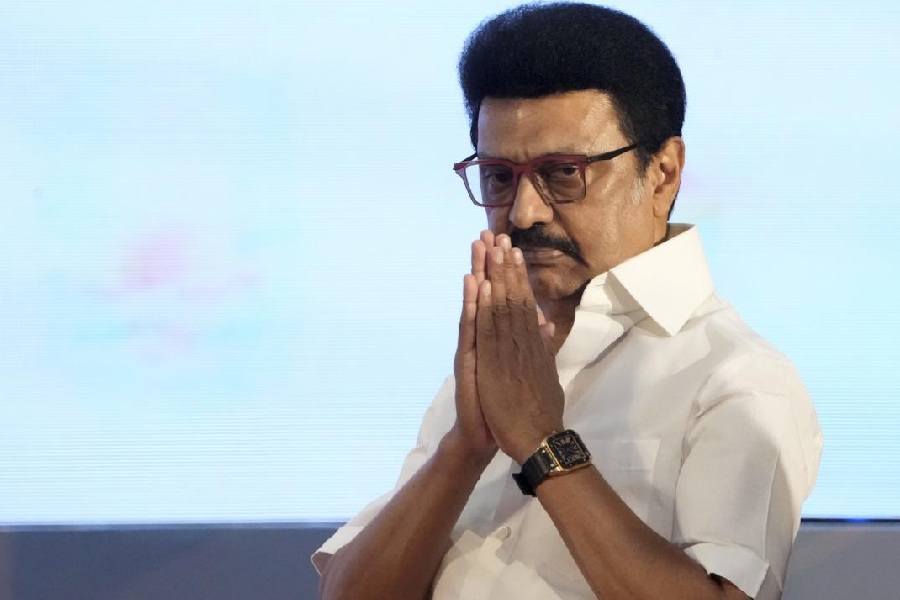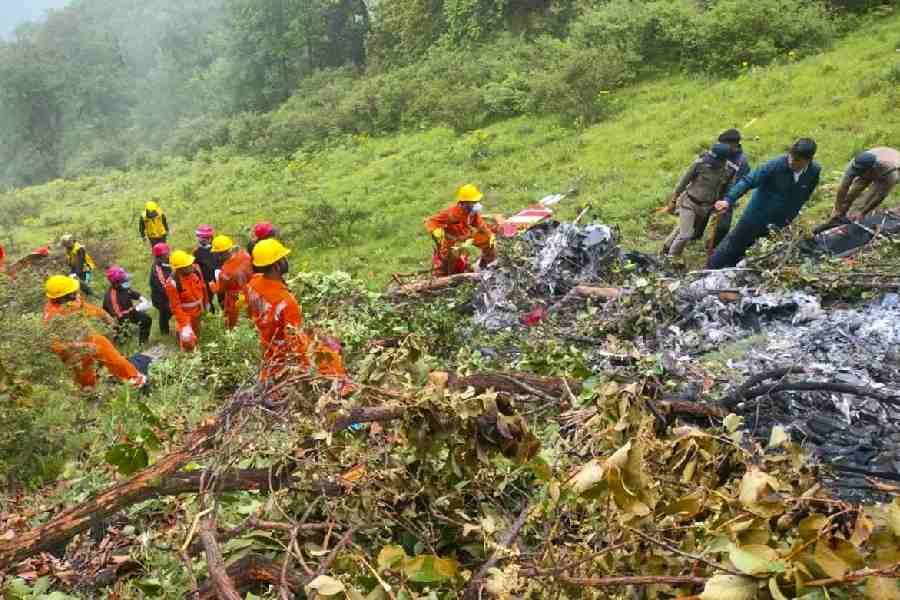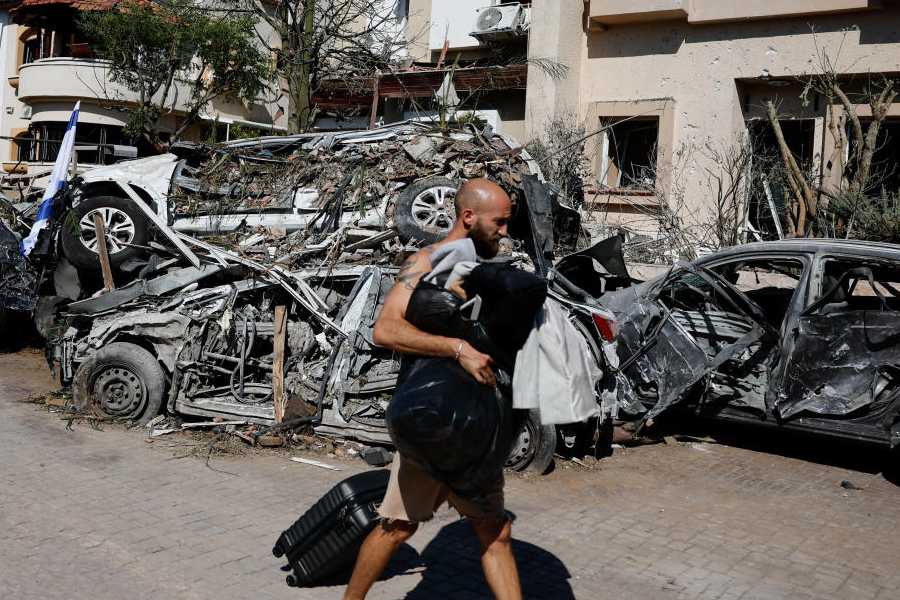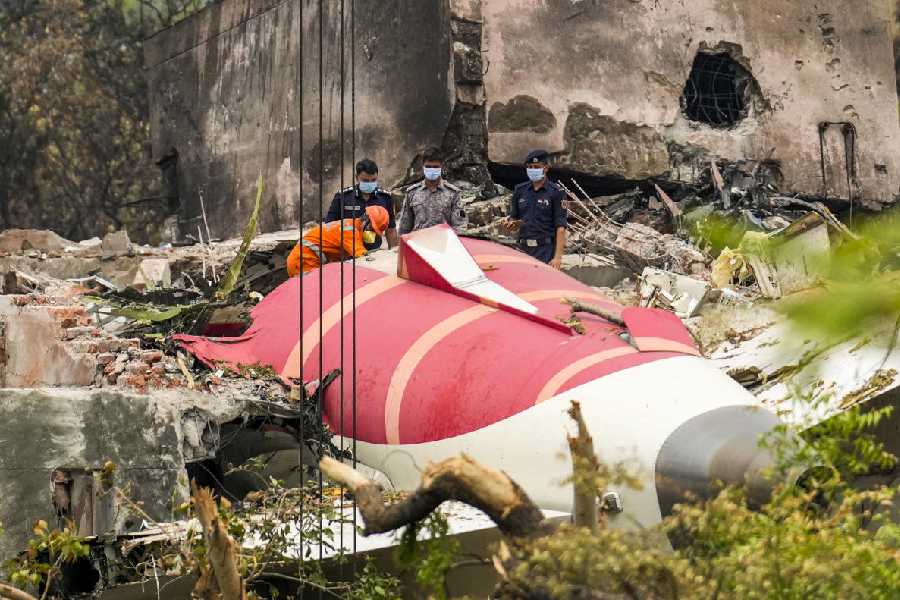 |
Aakriti Art Gallery’s exhibition, Contoured Accents (February 22-March 2), featured nine not-so-well known artists from Calcutta — which is a rarity, given the former cultural capital’s low rating on the national art scene. The participants have little in common with one another, the only link being stylistic.
Most of them, save Diptish Ghosh Dastidar and Apu Dasgupta, make non-figurative works, and they were all born mostly between the 1950s and 1960s; the youngest, Apu Dasgupta, being born in the early 1970s. Amitabha Dhar’s work hints at figuration, and he paints mainly in brown with splashes of red and dripping pigment. Apu Dasgupta’s watercolours depict figures in isolation or in clusters — like the petals of chrysanthemums — and are devoid of details. His paintings are almost monochromatic and that increases their impact.
Samit Dey’s acrylic paintings on paper are in black and white with plenty of grey areas in between. His works have the structural severity of geometric drawings. But the artist seems to allow his paintbrush the freedom to express itself, and this gives his works a certain suppleness in spite of their severity — which goes to his advantage. Sunil De’s paintings are like acres of slate. It must have taken immense concentration on the part of the artist to create these painstakingly and subtly shaded works symbolizing silence.
Like most of the participants of this exhibition, Saibal Datta uses paint sparingly but judiciously. The strength of his work stems from this ability to resist temptations. Pradosh Paul creates strange (fungal?) forms, once again with a limited range of colours — which could well be his strength. The use of red and cream against grey is most effective. Pradip Rakshit’s palette begins and ends with blue, in this exhibition at least. Sometimes, it seems light is breaking through darkness. So, instead of being dull and monotonous, his paintings look alive. Debashis Chakraborty’s works are more like drawings than paintings, although he uses a lot of colours. They are more akin to drawings/doodles owing to the predominance of lines. Chakraborty seems to favour automatism and has allowed the unconscious to take over. He may not have gone into a trance but has allowed himself a certain degree of arbitrariness.
Of all the nine participants, Diptish Ghosh Dastidar really stands out, as his paintings are photorealist, albeit in a manner very different from the usual verisimilitude. His Cheeta Nehi Peeta (picture) is a case in point. The graceful spotted creature seems to be balancing its paws mid-air, as if the air itself is solid. The cans of soft drink cast shadows on the sky and so do the branches of trees. By tweaking the law of gravity, he reaches a different dimension altogether.











